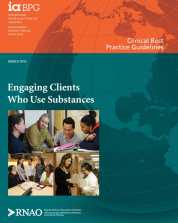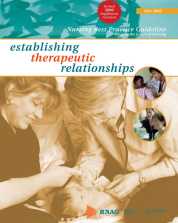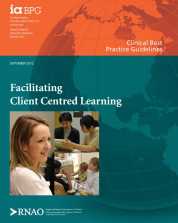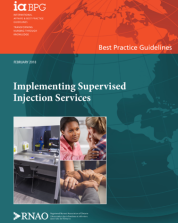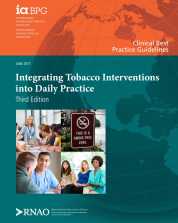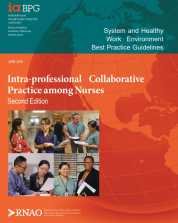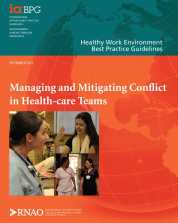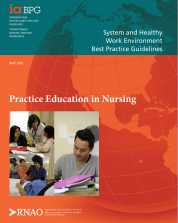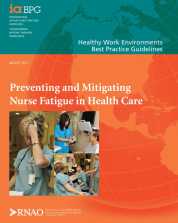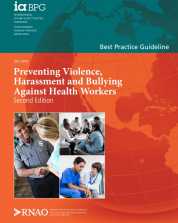The purpose of this best practice guideline is to provide nurses and the interprofessional team across all care settings with evidence-based recommendations related to assessment and interventions for individuals aged 11 years and older who use substances and may be at risk for or experiencing a substance use disorder.
The purpose of this best practice guideline (BPG) is to address the therapeutic relationship and its central importance to nursing practice. Effective nursing practice is dependent on an effective therapeutic relationship between the nurse and the client. The guideline addresses the qualities and capacities of an effective therapeutic relationship, the state of knowledge, and the knowledge needed to be effective in a therapeutic relationship.
The aim of this best practice guideline (BPG) is to provide evidence-based recommendations for Registered Nurses, Registered Practical Nurses and other health-care providers to facilitate client-centred learning that promotes and enables clients to take action for their health.
The purpose of this best practice guideline (BPG) is to provide an overview of principles, resources, and structures for delivering evidence-based supervised injection services (SIS).
The purpose of this best practice guideline (BPG) is to provide best practices for tobacco interventions for nurses and other health-care providers across all care settings, with evidence-based recommendations related to assessment and interventions for adults who use tobacco.
The purpose of this best practice guideline (BPG) is to strengthen collaborative practice among nurses, because effective collaborative practice is essential for working in health-care organizations.
The purpose of this best practice guideline (BPG) is to manage and mitigate interpersonal conflict among healthcare teams with the view that while some conflict is preventable, healthy conflict can also be beneficial.
The purpose of this best practice guideline (BPG) is to provide evidence-based recommendations that promote and sustain the undergraduate nursing student’s application of knowledge to practice in a variety of clinical learning environments. The guideline explores the relationships among and between students and nursing educators, nursing staff, preceptors and diverse health-care team members, and it considers their influence on the quality of practice education, professional socialization and nursing excellence.
The purpose of this best practice guideline (BPG) is to identify and describe: practices that result in preventing and mitigating fatigue for nurses and other health-care professionals; system resources that support practices to prevent fatigue; organizational culture, values and resources that support effective practices to prevent fatigue; personal resources that can be used to prevent or mitigate fatigue; and anticipated outcomes when fatigue is effectively managed.
The purpose of this best practice guideline (BPG) is to enhance the safety of health service organizations and academic institutions through the adoption of evidence-based practices. Safe and healthy work environments are an enabler for nurses and other health workers to optimize clinical outcomes for those receiving care. Such environments also optimize teaching and learning in academic settings. Specifically, the guideline will address how to recognize, prevent, and manage violence, harassment and bullying in the workplace.
